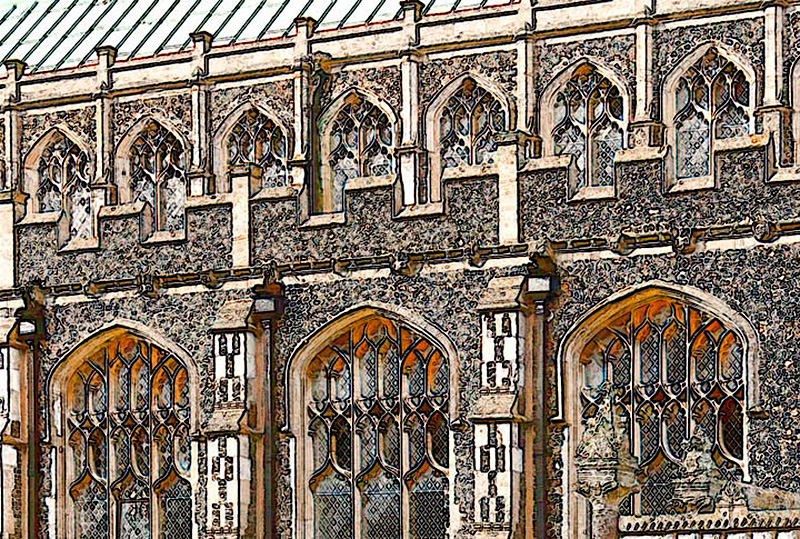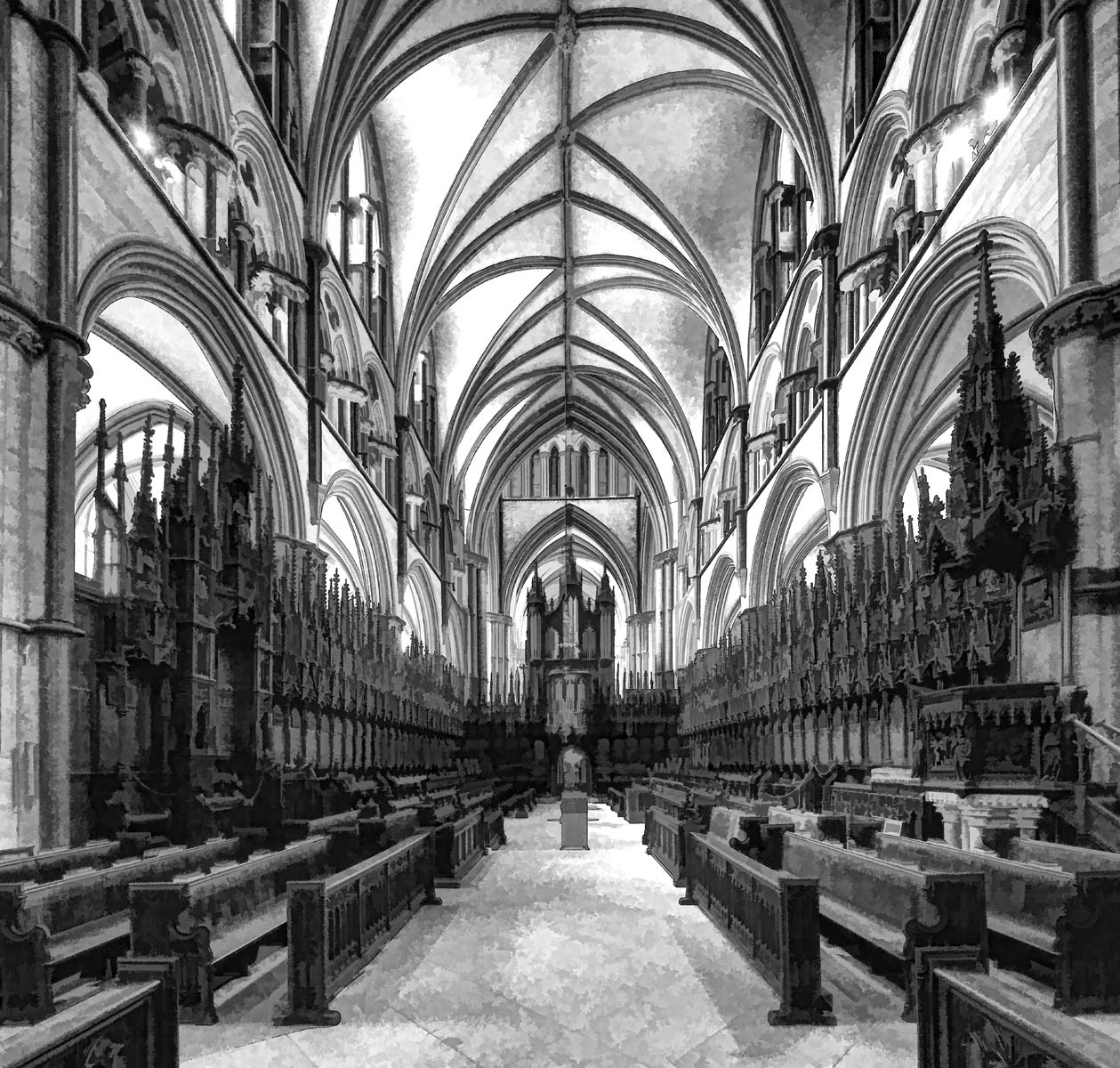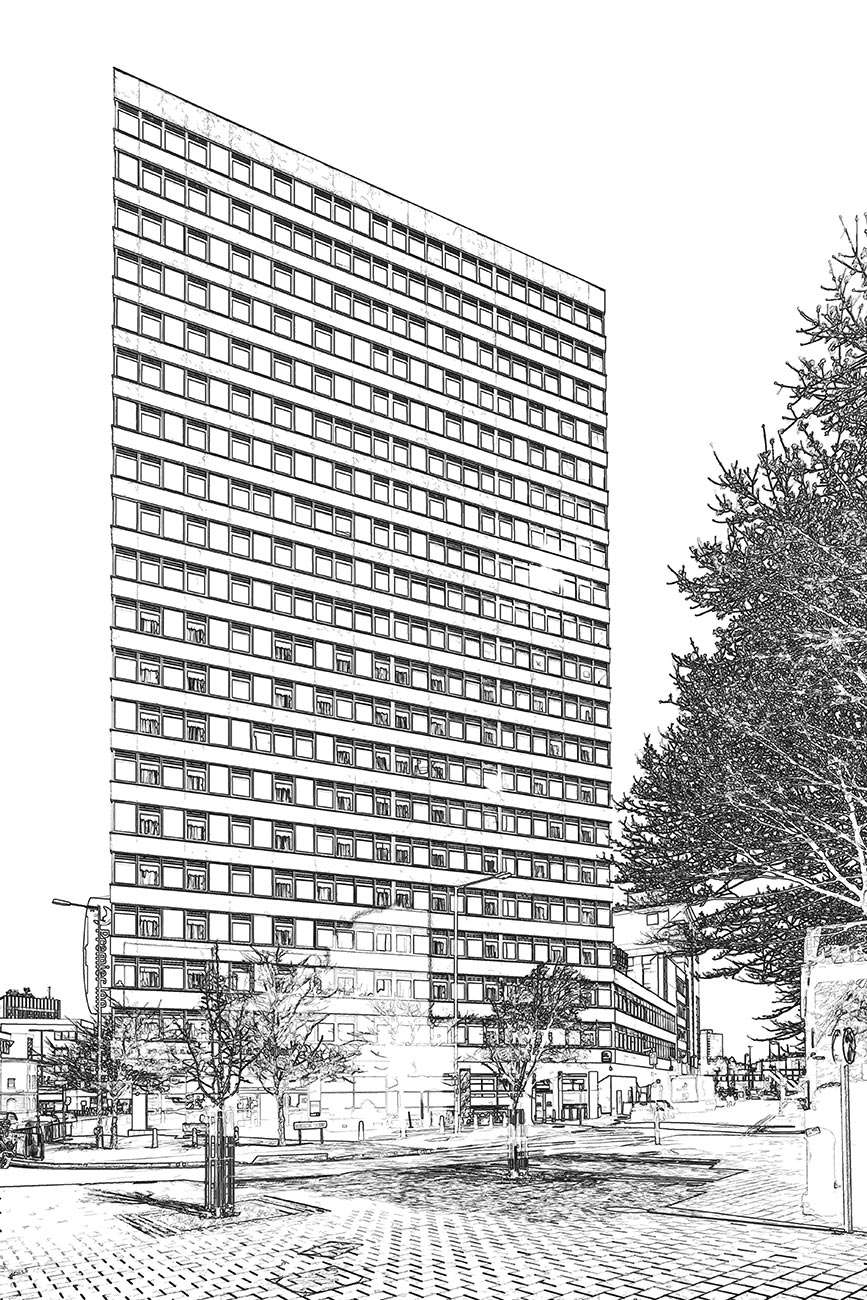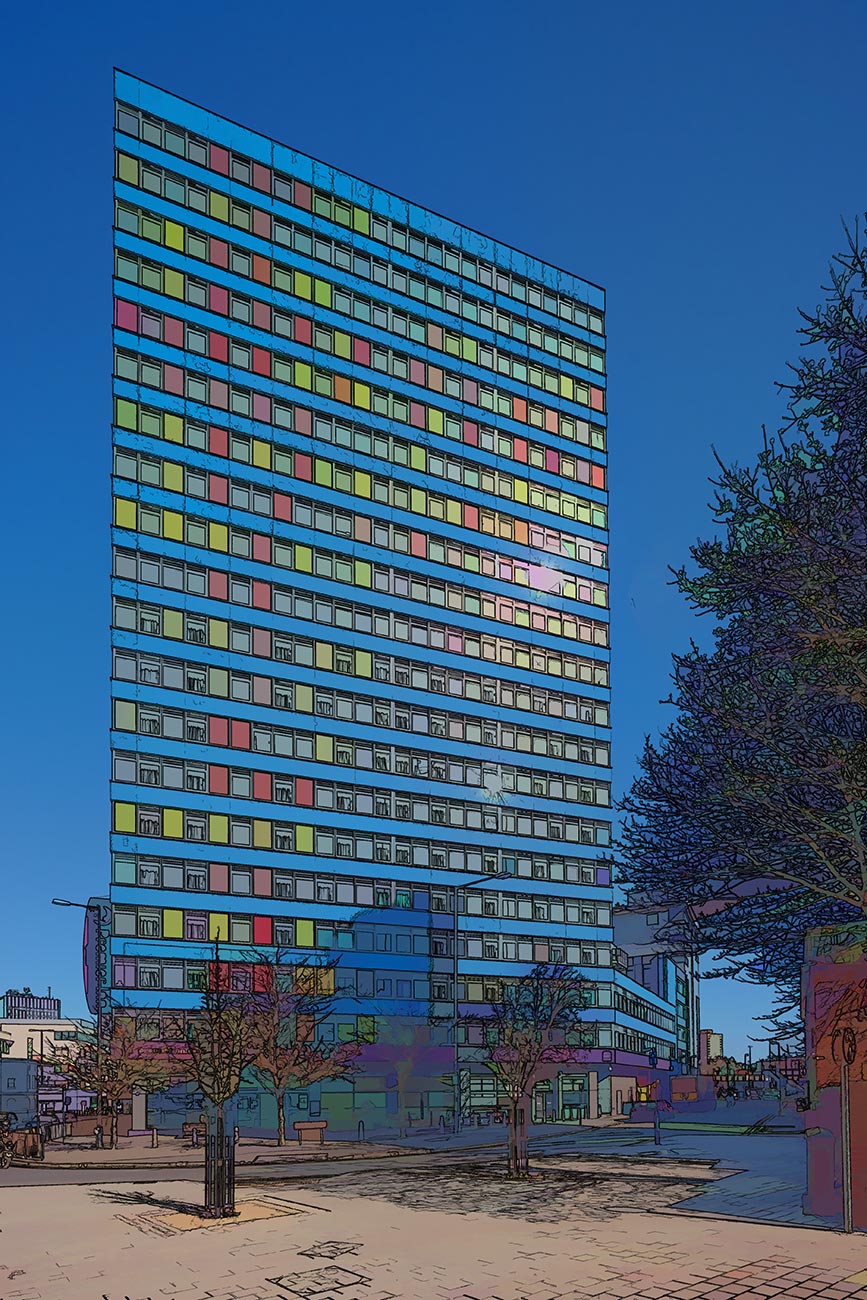Drawings and paintings from architectural photos
Drawings from photos
Techniques and tools for creative enhancement
I’m tempted to use the term ‘creative enhancement’ with care, since much of our architectural work emphasises detail and structure, producing images ‘of record’, even if they are visually appealing (the conflict between such requirements is perhaps for another blog article!).
Sometimes for web or display use a more graphic or artistic interpretation is needed.
Over on our main site, I have a lot more detailed technical articles and reviews, but I thought I’d show some examples of two Photoshop plugins from Topaz labs that are worth exploring if you’re looking to do something a little ‘different’ with your images.
This view is of a section of the superb church at Blythburgh in Suffolk.
Topaz Simplify and Topaz Impression
Both bits of software work as plugins for Adobe Photoshop (and some other image editing packages).
Simplify effectively processes detail in images, at a variety of scales, with a combination of edge detection and tonal adjustments. This detail can be removed or simplified, giving effects like sketching, watercolours and many more.
Impression takes elements of the structure of painted and drawn images (brush and pencil strokes for example) and recreates your photo using such strokes, based on the actual content of your image. It also allows you to change the base media (canvas/paper/wood etc).
I’ll start with a quick look at Simplify.
This view of the Choir at Lincoln cathedral combines line and edge extraction with smoothing of tonal areas.
It may help to adjust tonality (shadow levels for example) before running the filter, since it’s working on image detail, not what you might know are ‘real’ features.
A more extreme example of the ‘blue tower’ in Leicester (there is a photo of this building [St George’s Tower] in the Hotel section of portfolio images). This is using edge detection to create a line drawing.
The software has both preset adjustment options and lots of fine tuning settings, once you have a feel for what you want.
Or, with colour for a more ‘cartoon’ look.
The colours are based on the original image here, but you do have quite a variety of palette options.
Topaz Impression
Whilst Simplify extracts detail from an image, Impression uses the detail and overall structure as a basis for creating something much further from the original.
This view of John Lewis [Foreign Office Architects (FOA)] in Leicester (from the front page of this site ) has had a colour pencil drawing effect.
Note how some detail (such as the John Lewis sign) has been retained. This was not a choice of mine and was a surprise to me when first converting the image…
You can easily go to a ‘painterly’ look – the paint is modelled in this instance as having real depth (shadowing).
Lighting angles can be modified for both paint and media, to bring out the illusion of texture.
I rather like this sketch style (you can change the colour/texture of the base media)
One of my own favourites from when experimenting with these plugins, was this sketch view of St Davids Cathedral in Pembrokeshire (see the St Davids collection of ‘real’ photos).
I hope these few examples give a feel for what you can do with the two Topaz plugins – there are free time limited demos available (see links in the articles below).
Both benefit from plenty of experimentation – as much as anything to see what aspects of photos work best with different settings, and there’s nothing to stop you blending two or more versions of an image together in Photoshop.
I’ve written much longer technical reviews of each plugin over on our Northlight Images site.










